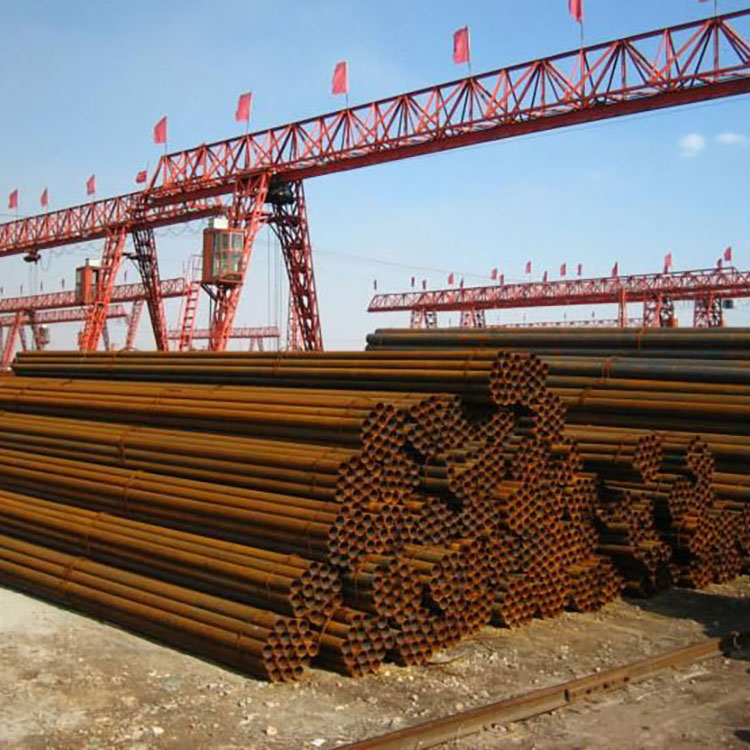The Role of Protective Coatings on Steel Pipes and Their Contribution to Longevity
2024-05-25
In the world of construction, industrial applications, and infrastructure, steel pipes play a pivotal role. However, their durability and longevity depend heavily on the protection they receive from various external factors. This is where protective coatings come into play, offering a crucial layer of defense against corrosion, abrasion, and other potential threats.
The Role of Protective Coatings
Protective coatings on steel pipes serve a multifaceted purpose. Primarily, they act as a barrier between the pipe's metal surface and the external environment. This barrier prevents corrosive substances, such as water, oxygen, and chemicals, from directly contacting the pipe's surface.
Moreover, protective coatings also provide resistance to abrasion and impact. In applications where pipes are exposed to physical contact or friction, coatings can help minimize wear and tear, ensuring the pipe's structural integrity remains intact.
Contribution to Longevity
The primary benefit of protective coatings on steel pipes is their contribution to longevity. By effectively shielding the pipe from corrosive agents, coatings significantly reduce the risk of corrosion, which is one of the leading causes of pipe failure. Corrosion can lead to leaks, reduced flow capacity, and even structural collapse, all of which can have significant financial and operational implications.
In addition, protective coatings also contribute to the longevity of steel pipes by improving their resistance to abrasion and impact. As pipes are often subjected to various forces and stresses in their operational environment, coatings help mitigate the effects of these factors, preventing premature wear and tear.
Types of Protective Coatings
There are several types of protective coatings available for steel pipes, each with its own unique properties and applications. Some common examples include:
Epoxy coatings: These coatings provide excellent chemical resistance and abrasion resistance. They are often used in applications where pipes are exposed to harsh chemicals or abrasive media.
Fusion-bonded epoxy (FBE) coatings: FBE coatings offer superior adhesion to the pipe's surface and provide long-lasting corrosion protection. They are commonly used in pipeline applications where high pressure and temperatures are present.
Polyurethane coatings: Polyurethane coatings are known for their flexibility and durability. They are often used in applications where pipes need to expand or contract due to temperature changes or pressure fluctuations.
Conclusion
In summary, protective coatings play a crucial role in ensuring the longevity and reliability of steel pipes. By providing a barrier against corrosion, abrasion, and other threats, coatings significantly reduce the risk of pipe failure and ensure smooth, uninterrupted operation. Selecting the right type of coating for your specific application is essential to maximizing the benefits and ensuring optimal performance.

In the world of construction, industrial applications, and infrastructure, steel pipes play a pivotal role. However, their durability and longevity depend heavily on the protection they receive from various external factors. This is where protective coatings come into play, offering a crucial layer of defense against corrosion, abrasion, and other potential threats.
The Role of Protective Coatings
Protective coatings on steel pipes serve a multifaceted purpose. Primarily, they act as a barrier between the pipe's metal surface and the external environment. This barrier prevents corrosive substances, such as water, oxygen, and chemicals, from directly contacting the pipe's surface.
Moreover, protective coatings also provide resistance to abrasion and impact. In applications where pipes are exposed to physical contact or friction, coatings can help minimize wear and tear, ensuring the pipe's structural integrity remains intact.
Contribution to Longevity
The primary benefit of protective coatings on steel pipes is their contribution to longevity. By effectively shielding the pipe from corrosive agents, coatings significantly reduce the risk of corrosion, which is one of the leading causes of pipe failure. Corrosion can lead to leaks, reduced flow capacity, and even structural collapse, all of which can have significant financial and operational implications.
In addition, protective coatings also contribute to the longevity of steel pipes by improving their resistance to abrasion and impact. As pipes are often subjected to various forces and stresses in their operational environment, coatings help mitigate the effects of these factors, preventing premature wear and tear.
Types of Protective Coatings
There are several types of protective coatings available for steel pipes, each with its own unique properties and applications. Some common examples include:
Epoxy coatings: These coatings provide excellent chemical resistance and abrasion resistance. They are often used in applications where pipes are exposed to harsh chemicals or abrasive media.
Fusion-bonded epoxy (FBE) coatings: FBE coatings offer superior adhesion to the pipe's surface and provide long-lasting corrosion protection. They are commonly used in pipeline applications where high pressure and temperatures are present.
Polyurethane coatings: Polyurethane coatings are known for their flexibility and durability. They are often used in applications where pipes need to expand or contract due to temperature changes or pressure fluctuations.
Conclusion
In summary, protective coatings play a crucial role in ensuring the longevity and reliability of steel pipes. By providing a barrier against corrosion, abrasion, and other threats, coatings significantly reduce the risk of pipe failure and ensure smooth, uninterrupted operation. Selecting the right type of coating for your specific application is essential to maximizing the benefits and ensuring optimal performance.


